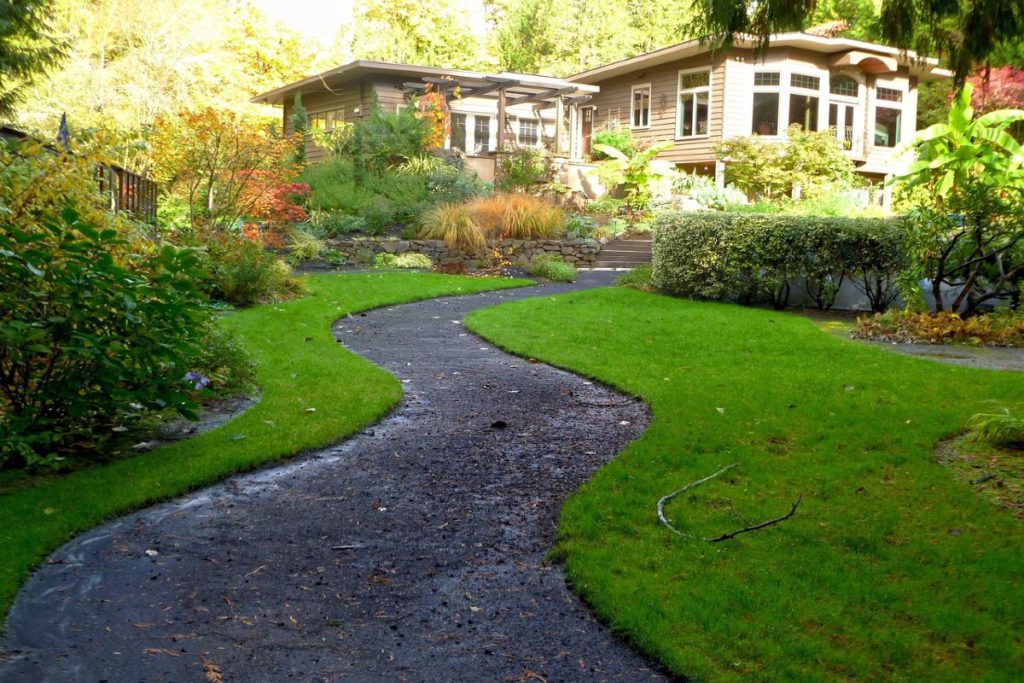When starting a DIY landscape project, you will want to decide on the theme of your yard or garden in the first place. Just as landscape designers do, sketch a plan out on paper or on a computer for your yard. If you were to hire a professional landscape designer, one of the first things they would do is to do a site plan survey of your property, including the back yard and front yard.
Landscape design software could come in handy here as a means to precisely communicate to your contractor exactly what you want your garden to look like. If you want a guaranteed way of making sure that your contractor completely understands how you would like your completed outdoor space to look, a template created using landscape design software is your best option. Landscape design software allows a user to precisely visualise how their completed design will look within minutes, so they can see what is going to look good or bad in their space without making real changes.

Some people will use landscape design software to accurately translate an idea from their head to the screen or to a printed piece of paper as a means to help them visualise how their yard could look before committing to making any permanent changes. Using it is a great aid as it means that design decisions can be made virtually instead of in reality, which could save time and money as opposed to jumping right into physically landscaping a garden and making mistakes.
Remember that you can create different spaces in your landscaping for different uses using strategically placed plants and hardscapes. You can even add hardscape elements and gardening accessories like benches and water features. Using unique plants, distinctive structures, or yard art allows you to emphasise specific areas in your landscaping.
Plants can serve as barriers that identify areas within your landscape and also define the boundaries where your landscape ends. You can use plants to create physical barriers within your landscape, blocking off both views and access to the area.
You can obscure parts of your yard by planting a foliage plant at a strategic location, angle your walkway or stairway, or place a mounding plant bed across from a view. Use water pipes or string to create imaginary boundaries for planting beds and objects sitting around your garage to represent larger plants such as shrubs and trees. You can make a distinction between the vertical lines of your space using tall bushes or trees, which will draw your guests’ eyes up, giving the front lawn and yard a more spacious feel.
If you like gardening but are tight on space or money, you might want to consider creating a vertical garden, which refers to using vertical space to grow plants. If you are using recycled materials, like plastic bottles, to create a vertical garden, vertical gardens can be a really cheap option. Cutting gardens work particularly well in raised beds, which can easily and cheaply be built by yourself using non-toxic materials.
If you want a yard that turns heads but does not empty your wallet, go green DIY. With these landscape tips and ideas, and some weekends of work, you will have all the curb appeal without all the spending.
Whether you are brand-new to landscapes or you simply want to get a few fresh ideas, read on for ways to make your front lawn and yard look like a professional designed them. While many people go directly to the local gardening supply store to browse the selection, creating a plan ahead of time helps you select plants that best meet your needs and will thrive in your landscape.
Do not only consider visuals; considering the smells of plants that you select for your landscape can improve the experience that you are creating for those who visit your yard. Staggered planting heights of your landscape can add visual depth to your yard. Redesigning your landscape can be intimidating, especially if you are trying to do so DIY.
Work with a plan. Create a general outline of your landscape, but work in phases. Always keep in mind that it is also important to take care of the health of your soil, especially if you want to grow some vegetables in it. Using garden mulch is a great way to provide essential nutrients to the soil. If you are focusing more on the looks, then going with bush mulch can make the soil look more attractive.
If you are looking to include DIY earthen mounds in your landscape design, use materials such as plant matter, sand, or soil. Use different types of rocks, such as big boulders, smaller rocks, rocks from a riverbed, and flat rocks, to mix up the textures, colours, and shapes of your rock garden. Simply add a clean, defined line of rocks, bricks, or even flowers to define the boundaries of your bed, water feature, or walking path.
In a nutshell, gardening is just like decorating the interior of your home, but instead of fabrics, paint, and furnishings, you will be using colours, textures, shapes, sizes, and plant placements to set the mood.
